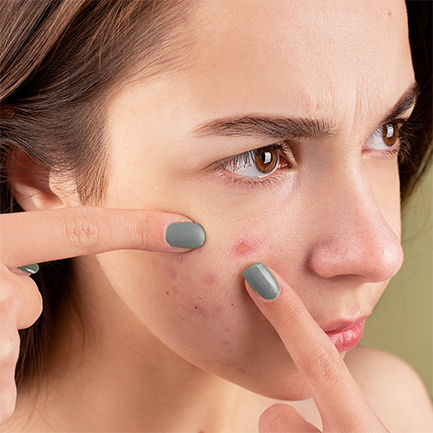Cysts
Nuisance, painful, leaking, etc – either way if you want it removed we can handle it.
What is a cyst?
There are multiple types but the most common are Epidermal Inclusion Cysts (body) and Pilar Cysts (scalp). A cyst is a nodule that is lined by “skin”. They mostly commonly come from a “blocked” hair follicle. I think of it as a balloon. The hair follicle gets blocked and then the contents of what the hair follicle makes (dead skin and oil) can’t get pushed out to the top of the skin. As the follicle continues to make products the “balloon” expands.
Why does it hurt or get red?
Many times, these cysts just grow until they find a size that

they want to be (some stay very small – some get very big). However, the pressure that builds in the balloon can lead to leakage of the contents – sometimes this is brought on by bumping the spot, sometimes it just happens on its own. When this happens the contents are no longer in the balloon and our immune system must come to the rescue to “clean up”. This can make the area red, painful, leak and look like an infection. However, it is unlikely that an infection has occurred.
What do I do if it is red and hurts?
I recommend warm compresses to encourage drainage of the area so there is less “stuff” for your immune system to need to clean up. If you can make an appointment with a dermatologist I recommend doing so – we typically inject a steroid (anti-inflammatory) into the area which helps reduce the inflammation, pain, drainage etc. The steroid typically takes 24-48 hours to start working. I DO NOT recommend having surgery at this time other than sometimes helping to drain the area. Draining the cyst is typically not a cure (unlikely to get rid of the cyst).How can I get rid of the cyst?
Surgical removal of the cyst wall (ballon) along with the contents of the cyst is recommended if removal is desired. The method is simple, we numb the area with lidocaine (injected numbing medicine) we remove the hair follicle and open the skin and find the thin cyst wall, dissect that out, and remove the cyst. Recurrence is possible if any of the cyst wall is not removed.
Therefore, we always recommend attempting to plan for surgery when the cyst is NOT inflamed. If the area is inflamed the success rate for removing the cyst wall entirely is much less. Additionally, when the skin is inflamed the procedure can hurt more and having a less cosmetic scar outcome.
Source: Mount Sinai (link - https://www.mountsinai.org/health-library/diseases-conditions/sebaceous-cyst)

